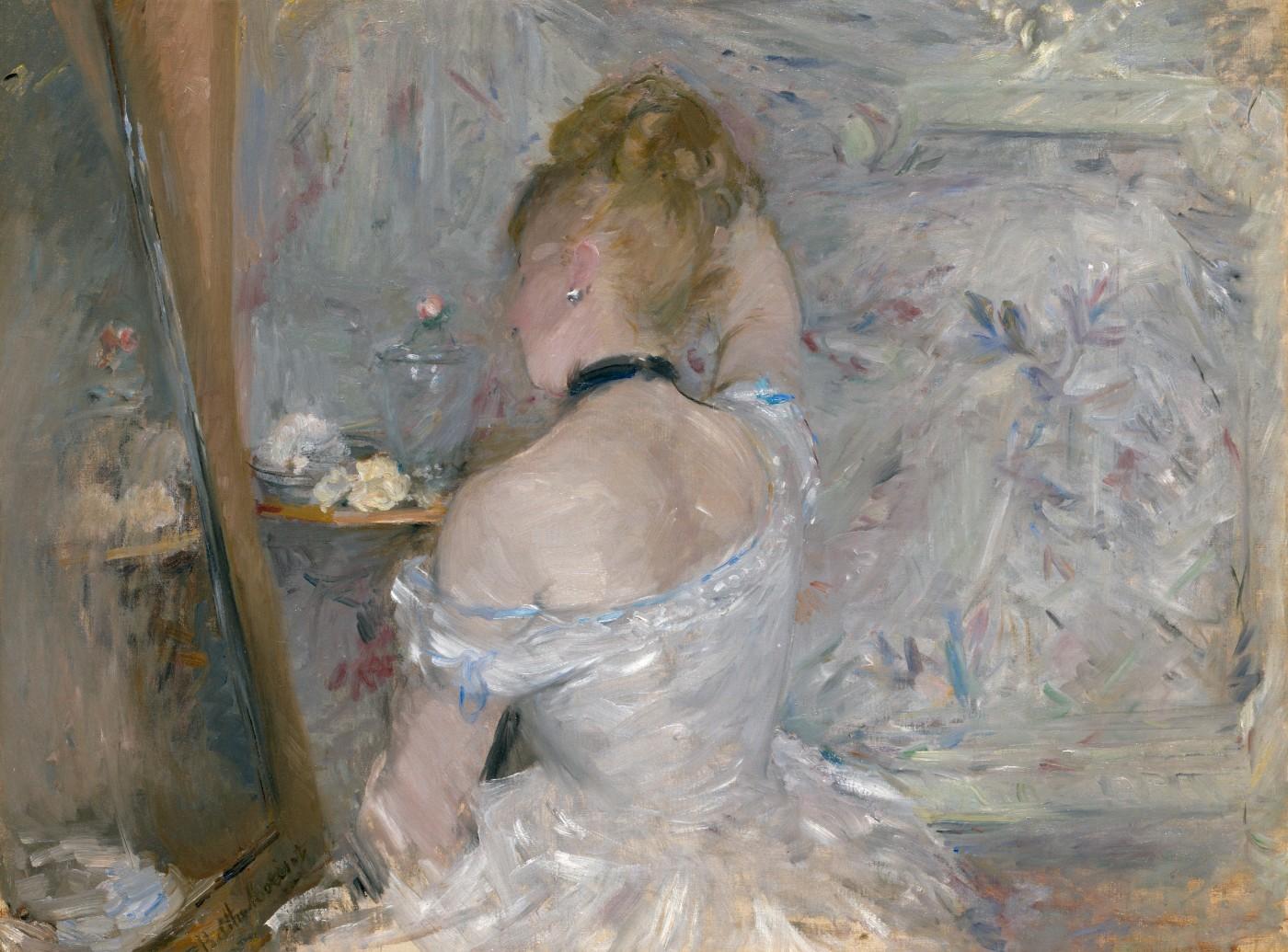
Berthe Morisot, Woman at Her Toilette, 1875-1880
When you ask people to name their favorite artist, and a female artist is given, the same names always seem to come up: O'Keeffe, Kahlo, and Cassatt. While all three made incredible art, there are countless other women artists who deserve to be household names. In this roundup, we shine the spotlight back on eleven of our favorite lesser-known female artists from our art history coverage.
Perhaps after reading our roundup, you will walk away with a new favorite artist!
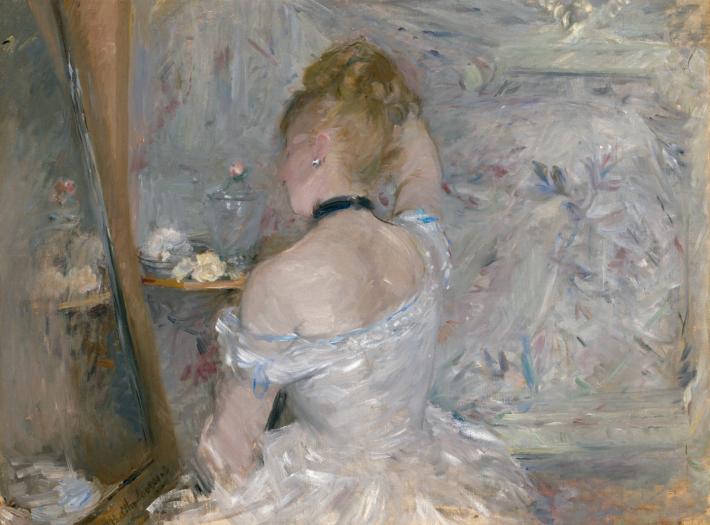
Berthe Morisot, Woman at Her Toilette, 1875-1880
“Despite being a founding member and leading artist in the Impressionist movement, Morisot is often overshadowed in art history by her now more famous male contemporaries. Claude Monet, Edgar Degas, and Pierre-Auguste Renoir are household names, while Morisot has remained more obscure. This exhibition seeks to reassert her place in art history as an essential member of this movement with a huge influence on modern art.”
From “Berthe Morisot Reclaims her Place in Art History" - October 2018

Erna Rosenstein, Pomniki (Monuments), 1955.
“Much of Erna Rosenstein’s Surrealist artwork has the character of children’s book illustrations—enchanting, vibrant, with a feathery application—but that’s only part of it. In one painting, a small train chugs across a bleak landscape, its chimney piping a trail of smoke. Where puffy cumulus clouds should float above the horizon, there are—inexplicably—two smiling, disembodied faces. The surrealism of Rosenstein’s work comes from the way something so bewitching can also be nightmarish, bodily, ironic, and enigmatic.”
From “How Erna Rosenstein Created Fairy Tales to Process Trauma” - November 2021
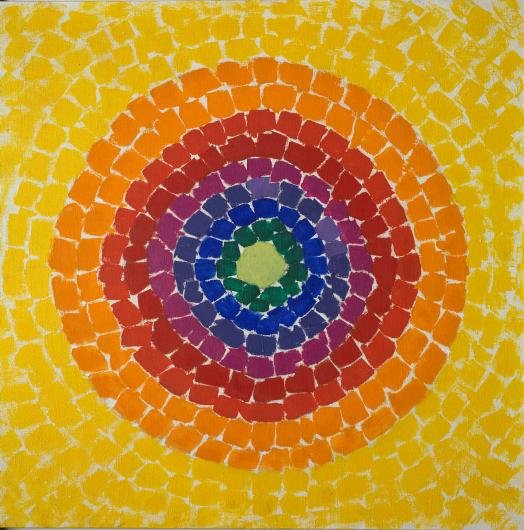
Alma Thomas, Resurrection, 1966, Acrylic and Graphite.
“The White House Collection acts as a non-profit, using donations to build their collection. The Obamas chose this vibrant Alma Thomas painting to grace the redecorated dining room, hanging opposite a Robert Rauschenberg painting. A teacher and member of the Washington Color School, Thoman left a major mark on the arts in Washington. This is the first artwork in the White House Collection by an African-American woman.”
From “The Artworks Selected by the Bidens for the White House” - January 2021
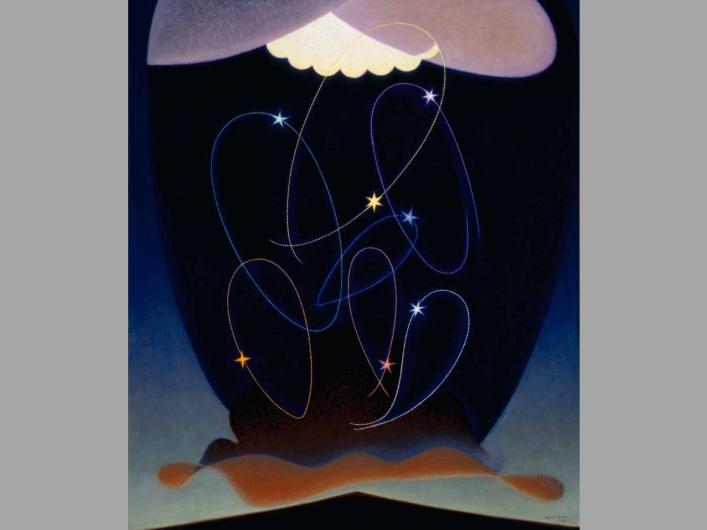
Agnes Pelton, Orbits, 1934.
“Few outside of Cathedral City, California, noticed when Agnes Pelton died in 1961. Although her close community of friends and neighbors mourned the artist who had painted compelling works that reflected her intensive studies of esoteric beliefs, the art world had largely ignored her visionary compositions. Many who did remember her work were only familiar with Pelton’s more conventional desert landscapes that she painted to support herself. Now Pelton’s abstractions are finally getting the mainstream acclaim they lacked during her lifetime.”
From “Agnes Pelton: The Forgotten Woman Modernist Inspired by Nature’s Unseen Forces” - March 2020
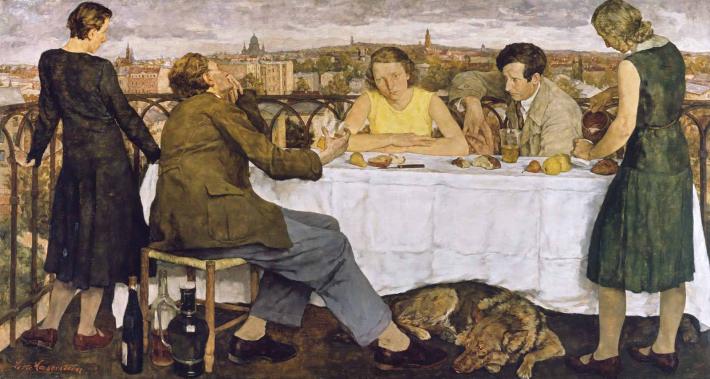
Lotte Laserstein, Evening Over Potsdam, 1930. Oil on panel.
“The heavy mood captured in Lotte Laserstein’s oil-on-wood masterpiece, Evening Over Potsdam, reflects the time in which it was painted. The year was 1930, and the Roaring Twenties–a decade in which the artist flourished professionally and received much recognition for her work–had given way to the Great Depression. Laserstein, who was Jewish, was forced by the Nazis to close down her painting school five years later. She fled to Sweden in 1937. Her extraordinary body of work fell into obscurity. But decades later, Laserstein has been rediscovered. A small gallery exhibition in London in 1987 was followed by a 2003 show at Berlin’s Ephraim Palais organized by the Verborgene Museum (Secret Museum), which specializes in promoting the work of forgotten female artists.”
From “WWII Nearly Ended Her Career, Now a Jewish Painter Earns Late Recognition” - June 2019
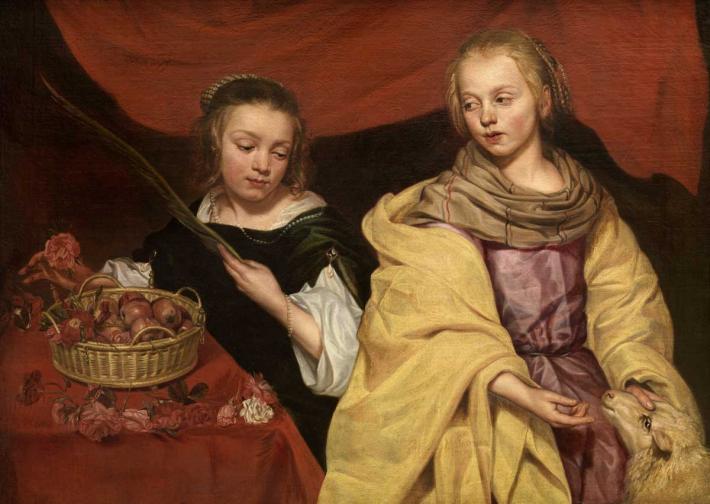
Michaelina Wautier, Portrait of Two Girls as the Saints Agnes and Dorothy, circa 1650s.
“Katlijne Van der Stighelen was looking for a portrait by Baroque Flemish artist Anthony Van Dyck, not a nine-by-eleven-foot mythological painting by a forgotten seventeenth century woman artist. During the Belgian art history professor’s visit to the storeroom of the Kunsthistorisches Museum in Vienna twenty-five years ago, a curator was leading her to the unexhibited Van Dyck when they passed a monumental work by another artist’s hand. Bacchanal (c. 1656) was instantly eye-catching, and Van der Stighelen found it odd that a work of such masterful skill should languish in absolute obscurity.”
From “Giving a Lost Baroque Master Her Due” - August 2018
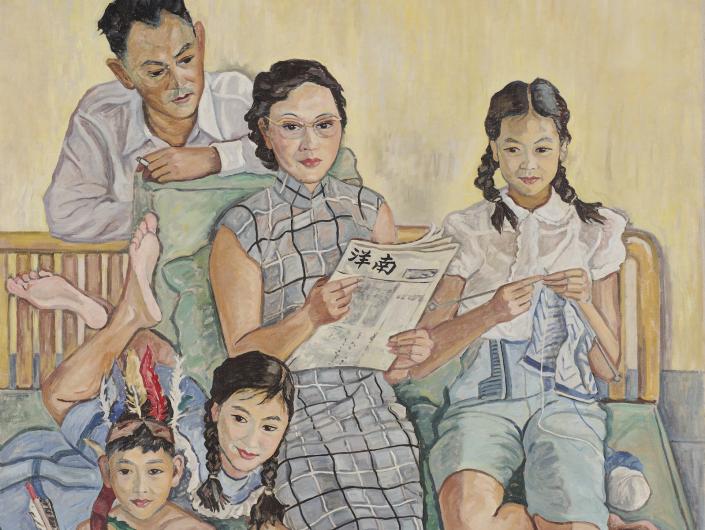
Georgette Chen, Family Portrait, 1954, Oil on canvas.
“This year, the National Gallery Singapore celebrates one of the most fascinating artists of the twentieth-century—Georgette Chen. The exhibition Georgette Chen: At Home in the World presents Chen’s most significant works together with newly found archival materials, such as letters, diaries, and photographs. The first part of the exhibition is dedicated to Chen’s years in Malaya and Singapore, while the second part focuses on her early years, her training, and the international recognition she achieved during her life.”
From “Georgette Chen: At Home in the World” - April 2021
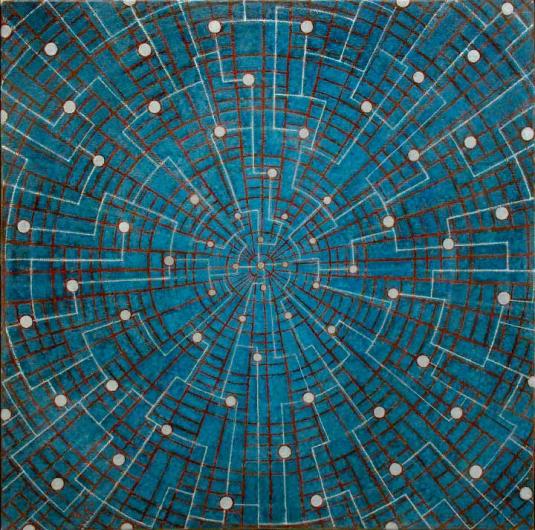
Menhat Helmy, Space Exploration/Universe, 1973.
“The Mohamed Mahmoud Khalil Museum was even more grand by night. Built in 1915 using elements of the Art Nouveau style of architecture, the four-story villa, once owned by politician turned art patron Mahmoud Khalil Pasha, was adorned with glass and metalwork fixtures at the entrance, while its eastern side faced the River Nile, glistening beneath the crescent moon. Spotlights and lampposts peppered the garden leading towards the entrance, guiding us towards a state-of-the-art exhibition hall—the largest of its kind at the time in Egypt—where a tribute was being held for my grandmother, Menhat Helmy.”
From “Menhat Helmy: Reclaiming the Legacy of an Egyptian Modernist” - May 2020
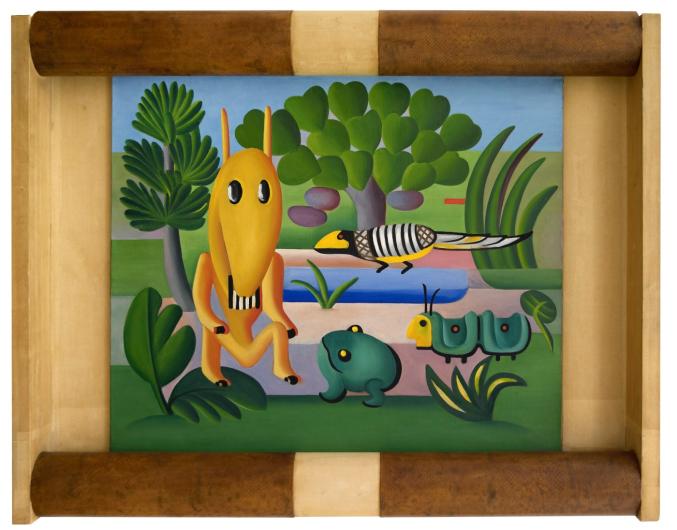
Tarsila do Amaral, A Cuca, 1924. Oil on canvas.
“Tarsila do Amaral: Inventing Modern Art in Brazil is currently on view at the Museum of Modern Art and is the first exhibition of the artist’s work in the U.S. Viewers are immediately introduced to Tarsila (1886–1973) via her cubist education. Indeed, it is important that Tarsila’s career be seen with the understanding that she benefited from extensive European modernist training and mentorship. We are shown how her personal style and highly colorful visual language evolved: it was inspired by European developments in formal abstraction and coloration and only later by the artist’s environmental and cultural milieu back in Brazil. The celebratory nature with which Tarsila came to depict her Brazilian surroundings comes across clearly in the show, though surprisingly little is shown of her late career works. As a result, MoMA’s retrospective presents an exciting albeit slightly limited look into the work of one of the most eclectic and canonical South American female modernists.”
From “Celebrating Fantastical Inventiveness: Tarsila do Amaral at MoMA” - April 2018
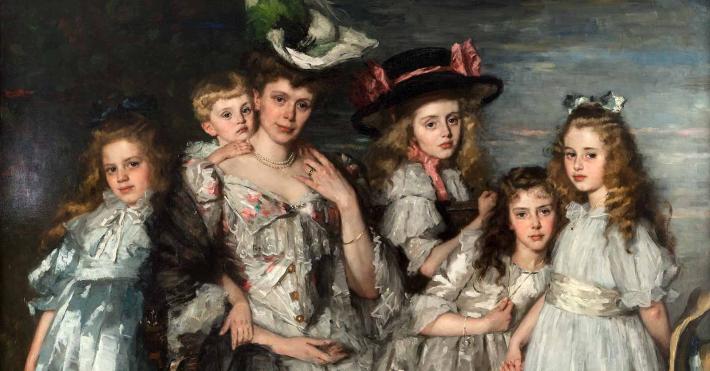
Thérèse Schwartze, Portrait of Aleida Gijsberta van Ogtrop-Hanlo with her five children, 1906. Oil on canvas.
“The artist stares hauntingly out at the viewer, paintbrush in one hand with the other looped through a paint-laden palette. The background of this canvas at Amsterdam’s Van Gogh Museum is bare, and we’re drawn to the painter’s tools: eyes, brush, pigments, and a rag at the ready. The artwork doesn’t depict beloved Post-Impressionist Vincent Van Gogh, though. This is a self-portrait by his Dutch compatriot and contemporary, Thérèse Schwartze, a successful portraitist between the late 19th century and her death in 1918. Schwartze was in high demand in her day but is now fairly obscure, and her likeness was part of the In the Picture group exhibition of artist portraits at the museum.”
From “The Unusual Career of Portraitist Thérèse Schwartze” - January 2020

Gwendolyn A. Magee, Crystalline Fantasy,1998, cotton and nylon with metallic and various threads.
“Gwendolyn Ann Magee (1943–2011) started quilting classes in 1989 to make quilts for her college-bound daughters. Magee excelled at fiber art, creating both strong abstract pieces and narrative explorations of Black history, culture, and experience. Her past as a civil rights activist and career in social sciences infused her work. In Crystalline Fantasy, sinuous leaf and branch shapes seem to dance, their bright greens and blues popping against a yellow-orange background. Textures, striped patterns and dots swirl through the foliage, evoking traditional African textiles such as kente cloth. A graduate of the University of North Carolina at Greensboro, her works are in the permanent collections of institutions across the United States.”
From “12 African American Artists You Should Know More About” - January 2022























